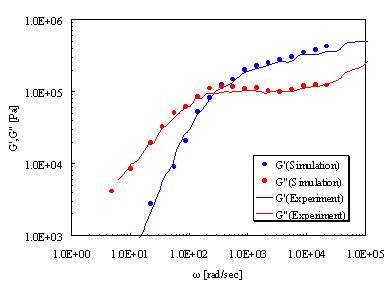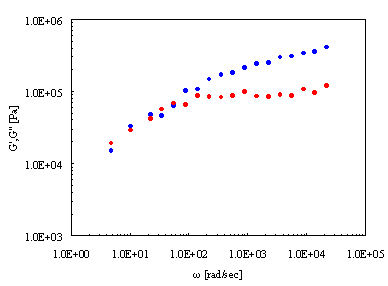Rheological Characteristics
The primitive chain network (PCN) model in NAPLES was used to analyze the dynamic viscoelasticity of polyisoprene. Storage modulus G′ and loss modulus G″ were evaluated based on molecular weight between entanglement points, and changes in elastic behavior in the low-frequency region due to the introduction of crosslinking were also confirmed.
Use Cases Highlights
- Evaluation of dynamic viscoelasticity of polymers
- Behavioral changes due to polymer crosslinking
- Good agreement with experimental results
Evaluation of dynamic viscoelasticity
Results of evaluating G′ and G″ of polyisoprene with NAPLES are shown. Based on the tube model, the molecular weight between entanglement points is used as Coarse-Grained units, and good agreement with experiments is obtained.

Dynamic viscoelasticity
Effect of crosslinked structure
Changes in G′ and G″ when 10% of entanglement points are replaced with crosslink points are shown. In the low-frequency region, more elastic behavior is observed, clearly indicating the effect of crosslink structures.

Dynamic viscoelasticity and crosslinking effect
Reference
[1] Masubuchi Y, Ianniruberto G, Greco F, Marrucci G, J.Non-Newtonian Fluid Mech., 149, 87-92, (2008)
Details of analysis
Inquiries Regarding Products
Have questions about product implementation? Contact us today.





